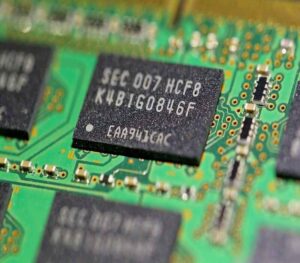Aljami Technology PE Ratio: A Comprehensive Guide
The Aljami Technology PE Ratio is a critical financial metric that has drawn significant attention from investors. This article plunges profound into its significance, computations, affecting elements, and how it can direct venture choices. Whether you’re a financial backer or a money fan, understanding this proportion is fundamental to assessing Aljami Innovation’s market position.
What Is the Aljami Technology PE Ratio?
The Cost to-Profit (Price-earning relationship) is a widely utilized assessment to pick on the off chance that a stock is exaggerated or misjudged. With respect to Aljami Development, the Cost procuring relationship gauges how much monetary sponsor will pay for each dollar of the association’s benefit.
For example, on the off chance that Aljami Innovation has a Price-earning relationship of 20, financial backers are paying $20 for each $1 of its profit. However, for what reason does this number matter to such an extent? Let’s explore further.
Breaking Down the PE Ratio
How Is the PE Ratio Calculated?
Computing the Price-earning relationship is direct:
Price-earning relationship = Market Value Per Offer ÷ Profit Per Offer (EPS)
For instance, accepting that Aljami Advancement’s stock is assessed at $100 per share and its EPS is $5, its Cost procuring relationship would be:100 ÷ 5 = 20
Why Is It Important?
The Price-earning relationship fills in as a depiction of financial backer opinion. A high Price-earning relationship might show that financial backers anticipate critical development, while a low proportion could mean the stock is underestimated — or that the organization is battling.
Why the PE Ratio Matters for Aljami Technology
1. Evaluating Market Value
The Aljami Technology PE Ratio assists financial backers with evaluating whether the organization’s stock cost lines up with its income potential. This is especially significant in the high speed tech industry, where valuations can soar in view of advancement and development potential.
2. Comparing With Industry Peers
Aljami’s PE ratio can be compared to other technology companies to determine if it’s priced competitively. If Aljami’s ratio is significantly higher than the industry average, it may suggest overvaluation.
Unique Characteristics of the Aljami Technology PE Ratio
High Growth Expectations
Technology companies like Aljami often have higher PE ratios due to their growth prospects. Innovations, market disruption, and scalability are key factors driving these expectations.
Market Volatility
The tech business is known for its unpredictability, and Aljami’s Price-earning relationship can vary in view of market patterns, profit reports, and financial backer opinion.
Focus on Future Earnings
Not at all like customary ventures, tech organizations are in many cases esteemed in light of future potential as opposed to current profit. This makes the Aljami Technology PE Ratio a forward-looking metric.
Factors Influencing the Aljami Technology PE Ratio
1. Revenue Growth
Strong revenue growth directly impacts Aljami Technology’s PE ratio.Financial backers will pay a premium for organizations that reliably increment their top-line income.
2. Market Trends
More extensive economic situations, like bullish or negative patterns, can influence Aljami’s valuation. Positive feeling in the tech area frequently prompts higher Price-earning relationships.
3. Competition
The presence of rivals in the tech space can also influence Aljami’s PE ratio. In the event that contenders are developing quicker, it could come down on the organization’s valuation.
4. Investor Confidence
Financial backer certainty, frequently determined side-effect dispatches, profit reports, or piece of the pie development, assumes a urgent part in forming the Price-earning relationship.
How to Analyze Aljami Technology PE Ratio
1. Compare With Industry Averages
The first step is to compare Aljami’s PE ratio to the industry benchmark. If the industry average is 25 and Aljami’s ratio is 30, it suggests a premium valuation.
2. Consider Historical Trends
Examining historical PE ratios can provide valuable insights. Has Aljami’s PE ratio been consistently high? Or have there been fluctuations? These patterns can reveal market sentiment over time.
3. Assess Earnings Growth
A rising PE ratio without corresponding earnings growth could indicate overvaluation. On the other hand, consistent growth in both earnings and the PE ratio signals a healthy investment.
When Is the Aljami Technology PE Ratio Considered High?
A high PE ratio can be positive or negative, depending on the circumstances:
- Positive: Indicates strong growth potential and investor confidence.
- Negative: Could signal overvaluation, especially if earnings don’t meet expectations.
For instance, if Aljami Technology’s PE ratio is 40 while the industry average is 25, investors may view it as overpriced unless justified by robust growth.
When Is the Aljami Technology PE Ratio Considered Low?
A low PE ratio often attracts value investors. However, it’s essential to investigate why the ratio is low. Is it due to undervaluation, or are there fundamental issues with the company?
For example:
If Aljami’s PE ratio drops to 15 while competitors are at 25, it could present a buying opportunity—or a warning sign.
Advantages of Using the Aljami Technology PE Ratio
1. Simplicity
The PE ratio is easy to calculate and understand, making it a go-to metric for investors.
2. Benchmarking
It allows for quick comparisons with industry peers, helping investors gauge Aljami’s market position.
3. Predictive Value
For growth-focused companies like Aljami, the PE ratio offers insights into future earnings potential.
Limitations of the Aljami Technology PE Ratio
1. Ignoring Debt and Cash Flow
The PE ratio doesn’t account for a company’s debt levels or cash flow, which are critical in evaluating financial health.
2. Short-Term Focus
Since it depends on profit, the Price-earning relationship can be affected by momentary changes, for example, once expenses or phenomenal additions.
3. Misleading in Isolation
Depending exclusively on the Price-earning relationship can deceive. It ought to be utilized close by different measurements like Cost to-Deals (P/S) or Free Income.
How Investors Use the Aljami Technology PE Ratio
1. Long-Term Growth Investing
Development financial backers frequently take a gander at Aljami’s Price-earning relationship to evaluate its drawn out potential. A higher ratio may signal strong future growth.
2. Value Investing
Esteem financial backers utilize the Price-earning relationship to track down underestimated stocks. A lower proportion can demonstrate a deal — however provided that the essentials are strong.
3. Risk Assessment
The PE ratio also helps in evaluating risk. A disproportionately high ratio may suggest speculative behavior, while a low ratio could indicate caution.
Case Study: Aljami Technology PE Ratio Over Time
In [specific year], Aljami Technology’s PE ratio surged due to a groundbreaking product launch. However, subsequent earnings misses led to a correction. This case highlights the importance of aligning PE ratios with performance.
Future Trends in Aljami Technology PE Ratio
1. Market Expansion
As Aljami enters new business sectors, its Price-earning relationship is supposed to rise, reflecting expanded financial backer certainty.
2. Innovation-Driven Growth
With a solid spotlight on Research and development, Aljami’s advancements could legitimize a top notch valuation in the years to come.
3. Economic Conditions
More extensive financial variables, for example, loan costs and expansion, will likewise impact the organization’s valuation measurements.
Conclusion
The Aljami Technology PE Ratio is something beyond a number — it’s a window into the organization’s market position, development potential, and financial backer feeling. While it’s a significant instrument, it means quite a bit to utilize it close by different measurements to go with informed choices. Whether you’re a carefully prepared financial backer or new to the market, understanding the subtleties of Aljami’s Price-earning relationship will engage you to without hesitation explore the tech area.
FAQs
1. What is the ideal PE ratio for Aljami Technology?
There’s no “great” number, however a Price-earning relationship somewhere in the range of 20 and 30 is frequently viewed as sensible for tech organizations.
2. Why does Aljami Technology have a higher PE ratio than traditional companies?
Tech companies, including Aljami, are valued based on their future growth potential rather than current earnings.
3. Can Aljami Technology’s PE ratio predict future stock performance?
While it provides insights, the PE ratio should be used with other metrics for accurate predictions.
4. How does Aljami Technology compare to competitors in terms of PE ratio?
Aljami’s PE ratio is competitive within the tech sector, often reflecting its strong growth prospects.
5. What are the dangers of depending entirely on the Price-earning relationship?
The Price-earning relationship overlooks factors like obligation, income, and economic situations, which can prompt fragmented examination.
For more articles; visit our website “smarttechblogger.com“.







